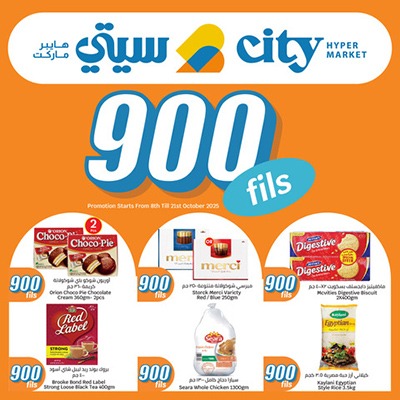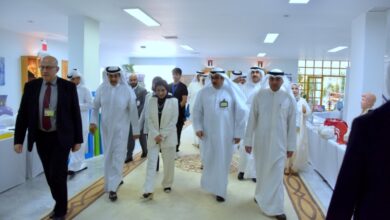
The Gulf stock markets recorded their third consecutive month of gains in July 2025, supported by optimism over accelerating economic growth, abundant market liquidity, and attractive equity valuations.
These positive developments coincided with easing geopolitical tensions in the Middle East, oil prices remaining above $70 per barrel, and the start of the second-quarter earnings season.
This momentum persisted despite uncertainty in U.S. economic indicators. The Federal Reserve is awaiting further data, including inflation figures — which rose to 2.7 percent year-on-year in June — before deciding on interest rate cuts, a decision that could influence global markets, reports Al-Rai daily.
Boursa Kuwait posted its third straight month of moderate gains, with the General Market Index rising 1.92 percent. Monthly liquidity jumped 19 percent to KWD 2.5 billion, with nearly half concentrated in Premier Market stocks, which rose 1.16 percent to close at 9,294.2 points. The Main Market Index advanced 5.8 percent, benefiting from strong activity in smaller-cap companies. For the first seven months of 2025, the General Market Index recorded a 17 percent gain.
Kuwait’s stock market performance was supported by investor confidence in leading companies, particularly banks, which reported 822 million dinars in net profits for the first half of 2025, a 5 percent rise year-on-year. The banking sector index gained 1.2 percent in July, bringing year-to-date growth to 21 percent. Government initiatives and liquidity flows into fundamentally strong stocks further strengthened market sentiment.
Liquidity in Boursa Kuwait reached 15.1 billion dinars in the first seven months, doubling from the same period in 2024. Premier Market stocks accounted for 57 percent of the total, with their index rising 18.6 percent. Main Market liquidity surged 254 percent year-on-year, comprising 43 percent of the total and driving a 10.2 percent gain in its index.
The Dubai Financial Market led Gulf markets in July with a 7.95 percent rise in its general index, driven by gains in banking and real estate stocks and robust inflows of both local and foreign liquidity. Investor confidence was high, reflecting strong demand from institutions and individuals. Since the start of the year, Dubai has gained 19.39 percent, underpinned by diversified investment activity and solid participation from institutional and foreign investors.
These factors contributed to improved risk appetite across the Gulf. Oil prices bolstered the trend, with the OPEC oil basket price climbing 10 percent in July to $75.34 per barrel due to strong demand and better global growth prospects.
With the exception of Saudi Arabia—which saw a 2.2 percent decline—all Gulf stock markets achieved notable gains in July, aided by improved economic sentiment and resilient oil prices.
The market capitalization of Gulf stock markets increased by $19 billion in July to reach $3.93 trillion. Abu Dhabi saw the largest jump—$18 billion—to $839 billion. Dubai and Qatar’s market values rose by $8 billion and $9 billion, respectively, while Kuwait’s grew by $3.3 billion to $170 billion.
Despite these monthly gains, Gulf stock markets collectively lost $195 billion in market capitalization in the first seven months of 2025, primarily due to a $308 billion drop in Saudi Arabia. Conversely, Abu Dhabi gained $43 billion, Dubai $28 billion, and Kuwait $26 billion in the same period.
Trading values across Gulf markets rose 12 percent in July to $53 billion, with Saudi Arabia accounting for 54 percent ($28.7 billion). UAE markets recorded $12.5 billion, and Kuwait’s liquidity rose 19 percent to $8 billion. In the first seven months, total Gulf trading reached $360 billion, led by Saudi Arabia ($212 billion), UAE ($77 billion), and Kuwait ($49 billion).
Kuwait’s market capitalization stood at 52.3 billion dinars at the end of July, up 8 billion dinars from December 2024. This was mainly driven by a 6 billion dinars increase in banks’ market value, 955 million dinars in real estate, and 370 million dinars in telecommunications. Banks accounted for 63.6 percent of market value, followed by financial services, real estate, telecommunications, and industry.
The Qatar Stock Exchange’s market value rose by $9 billion in July to $183.4 billion, with its index up 4.76 percent. Monthly trading value reached $2.59 billion, down 6 percent from June.
Abu Dhabi’s market recorded a 4.15 percent gain in July, marking four consecutive months of growth. Year-to-date, it is up 10 percent, with liquidity surging to $50 billion.
Price-to-earnings (P/E) ratios in Gulf markets have become more competitive than those in emerging and developed markets, averaging 16.1x. Kuwait’s P/E stood at 18.4x, Saudi Arabia at 15.3x, Abu Dhabi at 21.9x, Dubai at 11x, Qatar at 12.9x, and Bahrain at 9.4x.
Follow The Times Kuwait on X, Instagram and Facebook for the latest news updates













